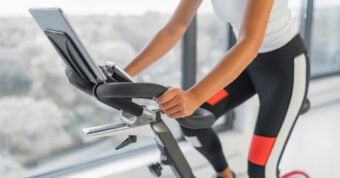Blog

How to Choose Patio Furniture in Texas
From backyard barbecues in Dallas to poolside lounging in Fort Worth, Texans know how to make the most of outdoor living. But the Texas climate is no friend to cheap patio sets. With triple-digit temperatures, sudden hailstorms, humidity spikes, and long exposure to UV rays, your furniture has to work as hard as you do.…

Can Movers Store Your Stuff?
Maybe you’re between apartments in Frisco, renovating your home in Arlington, or relocating your business across Dallas. What do you do with your belongings during the gap? The moving process itself is stressful, but the added pressure of finding storage can quickly become overwhelming. Many people today rely on movers who store their stuff when…

Why Everyone’s Moving to Texas
Howdy, y’all! If you’ve been hearing more and more folks talk about packing up and heading for the Lone Star State, you’re not alone. Moving to Texas has become one of the biggest relocation trends in the country. From young professionals chasing job opportunities in Dallas to retirees seeking sun and savings in San Antonio,…

How to Move a Fish Tank the Right Way (and Without Stressing Your Fish)
Moving a fish tank is more than just hauling glass. It’s relocating a fragile, balanced environment built over time, one that houses living creatures who rely on precise care. From filters and water chemistry to fish and plants, the process of moving your aquarium involves far more planning than moving a couch or table. So,…

Why Healthcare Facilities Trust Firehouse Movers for Medical Equipment Moving
Why Choosing the Right Medical Equipment Movers Matters More Than You Think If you’re relocating a Dallas-Fort Worth medical practice, dental office, or outpatient lab, it’s not just about hiring a truck. Moving sensitive medical equipment involves far more than muscle, it requires coordination, technical expertise, and a deep understanding of healthcare logistics. For those…

The Best Small College Towns in Texas
The Best Small College Towns in Texas When choosing a college, it’s not just the degree program that matters. The location where you study can shape your daily routine, how much money you spend, and what kind of community surrounds you. Whether you’re heading into your first year of college or helping a family member…

Discover the Best Dallas Barbecue Joints Worth the Drive
Looking for the best BBQ in Dallas? Our Dallas movers know the best smokehouse and places to eat BBQ in Dallas and Fort Worth. Check out these 7 top BBQ places!

Ready for a Move? Here’s Why You Should Hire Professional Movers
If you’re asking yourself: Why should I hire professional moving companies? Firehouse Movers takes a closer look in this article. Visit our website for more.

How to Drive a Moving Truck
Driving a moving truck can feel like a big step, especially if you’re used to zipping around in a compact car. Between new blind spots, a much longer braking distance, and the challenge of navigating tight turns, it’s understandable to feel hesitant. But if you’re prepared, cautious, and willing to adjust your driving habits, you…

How to Move a Peloton Bike Safely and Efficiently
Gym equipment moving is hard. Moving your Peloton bike isn’t as simple as lifting and loading a typical exercise machine. It’s a high-end, precision-built piece of equipment that demands caution, planning, and the right tools. Whether you live in a third-floor walk-up or are upgrading homes across Texas, understanding how to move a Peloton bike…
